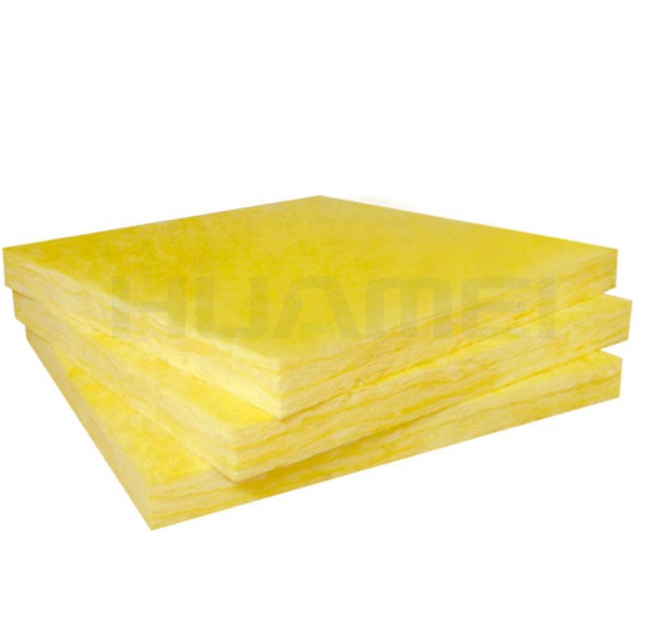The most commonly used and least expensive structure is the suspended ceiling of perforated plasterboard or the wall made of the perforated board filled with centrifugal glass wool. When the perforation rate is greater than 20%, the sound absorption performance of centrifugal glass wool can basically be fully utilized. In order to prevent glass wool fibers from spilling, it is necessary to attach a layer of non-woven fabric, mulberry paper, and other sound-permeable fabrics behind the perforated plate, or use glass cloth, plastic film, etc. to wrap the glass wool. Panels similar to perforated gypsum board include perforated metal panels (such as aluminum panels), perforated wooden boards, perforated fiber cement boards, perforated mineral wool boards, etc. The glass wool board can be made into a sound-absorbing ceiling board or sound-absorbing wallboard after treatment.

Generally, it is common to use glue curing around 80-120kg/m3 of glass wool board and outsourcing fireproof sound-permeable fabric to form sound-absorbing wall panels that are both beautiful and easy to install. Common sizes are 1.2m×1.2m, 1.2m×0.6m, 0.6m×0.6m, thickness 2.5cm or 5cm. There are also sound-absorbing ceiling panels formed by spraying sound-transmitting decorative materials directly on the surface of 110Kg/m3 glass wool. Whether it is a glass wool sound-absorbing wall panel or a sound-absorbing ceiling panel, it is necessary to use high-density glass wool and undergo a certain strengthening treatment to prevent the sheet from being deformed or too soft. This kind of building materials not only have good decorative properties but also retain the good sound absorption characteristics of centrifugal glass wool, and the noise reduction coefficient NRC can generally reach 0.85 or more. In large spaces such as stadiums and workshops, in order to absorb sound and reduce noise, sound-absorbing bodies with centrifugal glass wool as the main sound-absorbing material are often used. The sound absorber can be made into a plate, column, cone, or other special-shaped body according to requirements. The inside of the sound absorber is filled with centrifugal glass wool, and the surface is wrapped with a sound-permeable surface layer. Since the sound absorber has multiple surfaces to absorb sound, the sound absorption efficiency is very high. In road noise barriers, in order to prevent noise reflection, it is necessary to take sound absorption measures on the side facing the vehicle. Centrifugal glass wool is often used as the filling material and the surface layer is a barrier plate with perforated metal plates. In order to prevent glass wool from absorbing water and damp outdoors, it is sometimes wrapped with PVC or plastic film.
The above information is provided by the glass wool pipe supplier.
评论
发表评论